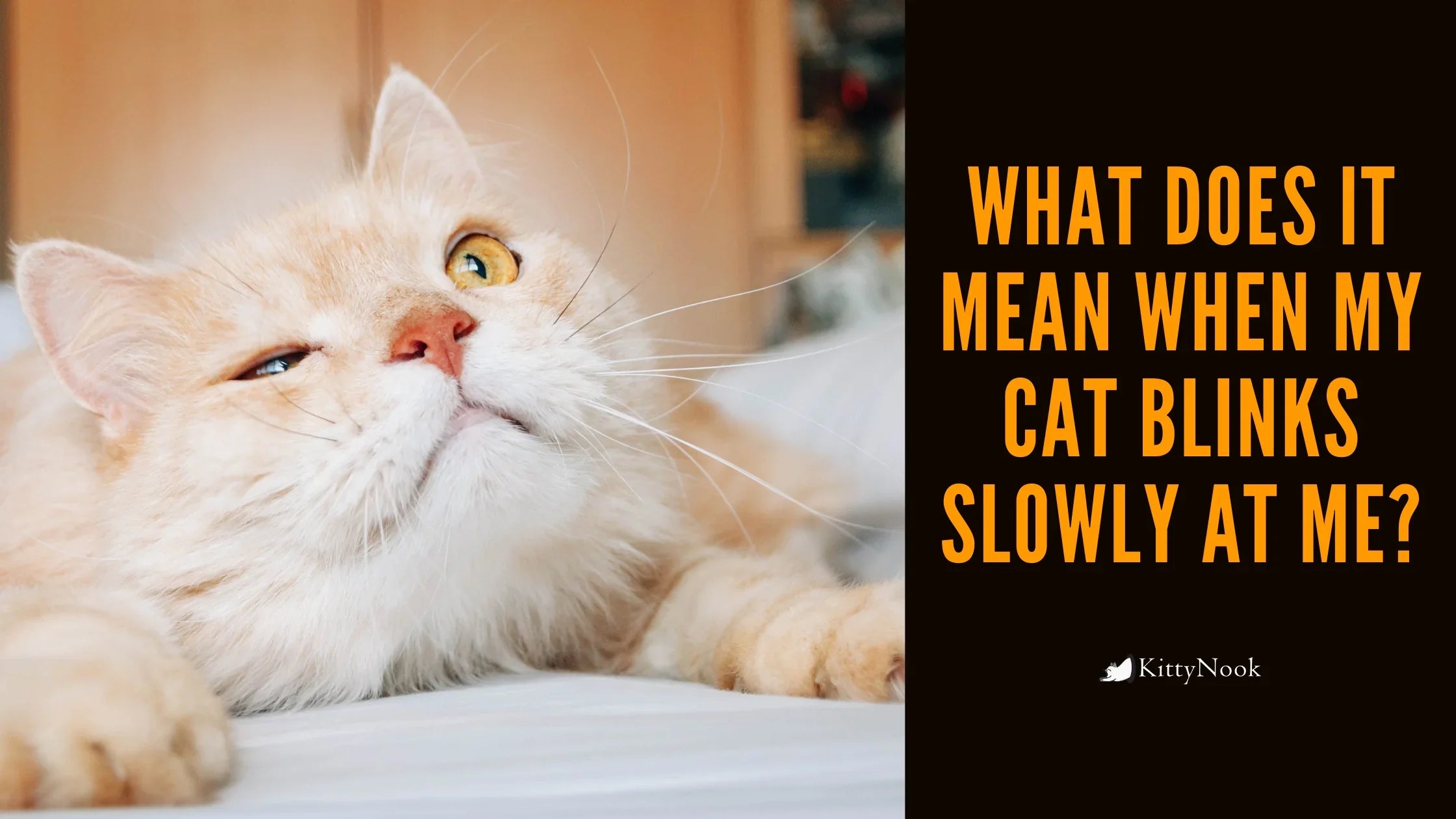Have you ever experienced how a cat sometimes will appear to take a look at you and slowly blink afterward? We will reveal what this cat's actions imply on today's blog. Read on!
If your pet is blinking, it could be because they have an eye issue that needs looking into. However, if the slow blinks occur more frequently than usual, there may be another factor. Here are some reasons why cats blink slowly when they're taking a look at us!
What Is Blinking Anyway?

Blinking can have many different causes. However, the majority of these troubles affect only one eye.
For some, a cat's stare is hard to ignore. Undoubtedly, it can be deeply curious to be the target of intense feline looks.
While a gazing competition with your cat might be the best pandemic activity, it still doesn't answer the question why they do it. Feline actions are usually puzzling, but we assume we could have a few suggestions to discuss this, especially the odd conduct of our cats.
Do I Look Tasty to You?

Cats are masters of non-verbal interaction, and to understand your cat's thoughts; you should also evaluate their body language.
- What is the position of their tail? (up, down, fluffed out, whipping around)
- What is their stance? (rigid, fluid-looking/relaxed)
- Are their ears upright or turned back towards the body?
When you place their stares into the context of other body movements, you can learn more about their mood.
Are You in Charge?

Cats are highly territorial family pets and enjoy feeling superior. Therefore, you could get a stare for being in "their" space.
Among cats, staring is associated with supremacy and also aggressiveness. Stares are the starting point for most feline interactions and can determine whether they will fight or play.
Furthermore, felines use their eyes to catch targets. Unlike us, cats do not need to blink, allowing them to keep their eyes on their next meal. This might explain why the stares will enable them to win gazing contests with their owners.
Are You Preparing For World Domination?

Felines are part of the family, even if it's just the two of you.
They love their owners and depend on them for safety, security, play, and food. Having a staring contest is simply one more way to affirm your bond. When you are calm, they are, too. They are frequently sizing you up to see how you feel so they can respond well.
What Your Feline's Body Language Might Be Saying

Here are six clues to help you interpret your cat's mood.
1. Belly Display

Feline body movement is more nuanced than that of pets. Part of the trouble arises when individuals take their understanding of dogs and apply it to cats.
Have you wondered why your cat's flirtatious actions of rolling over to expose its tummy might be met with apparent hostility when you try to stroke it?
When your cat is relaxed, it may expose its belly, but when a cat feels cornered, like in this circumstance--it may bare its claws and teeth. This shows that they are prepared to fight.
As with other feline-human communications, it is necessary to learn what your feline prefers.
2. The Trembling Blink

When a cat welcomes another feline or a person with slow blinks, it's showing love.
Why? Because in the feline world, shutting one's eyes in the presence of another is a sign of trust.
By blinking slowly at your cat, you can let it know that you are aware of its presence and pose no harm. So the next time your cat winks at you, it's a good idea to return the gesture.
3. The Halloween Pose

One of the most precise determinants of a feline's mood is its tail.
When held high, it communicates self-confidence. Curled around another feline's tail or legs, it indicates friendliness. And put below or between the legs, it shows insecurity or anxiety.
The upright bottle-brush tail is an unmistakable indicator that your cat is feeling threatened. And when combined with the arched back, hair standing, and unsheathed claws, the stance is a dead giveaway that you must withdraw.
4. The Direct Stare

Although humans can stare to show love, most cats find it harmful. That's why a cat generally gravitates toward someone in the room who ignores it in social setups.
The more scared a feline is, the broader its pupils become.
When widen, the pupils take in as much visual information as possible. This signals that a cat is very anxious.
In an excited or mad feline, the pupils might look tightened or constricted to concentrate more effectively on detail. However, cats' eyes likewise react to ambient lighting, so it's essential to observe the body language overall and not select just a single indicator.
When a cat realizes that they are being looked at, they might stop what they are doing and examine their surroundings.
5. Audio Cues

Cats may have adapted their meows to get humans to meet their requirements.
Cats do not meow to other cats; it is an attention-getting device to share greetings, demands for food, and more.
Learn the nuances of your pet's vocabulary so you can find the difference between a plea for supper and an urgent cry for aid. For example:
- Purring usually signals contentment and might likewise be a comfort-seeking behavior when the cat recovers from illness or is near death.
- High-pitched gurgling or chatting suggests friendliness.
- Roaring, hissing, or spitting are emphatic warnings to stay away--at least until the cat has cooled down.
- Caterwauling is a loud, guttural sound that cats (especially men who have not been sterilized) make when endangered by other felines.
Still, every feline is one-of-a-kind. Be confident because no one knows your cat better than you do.




















